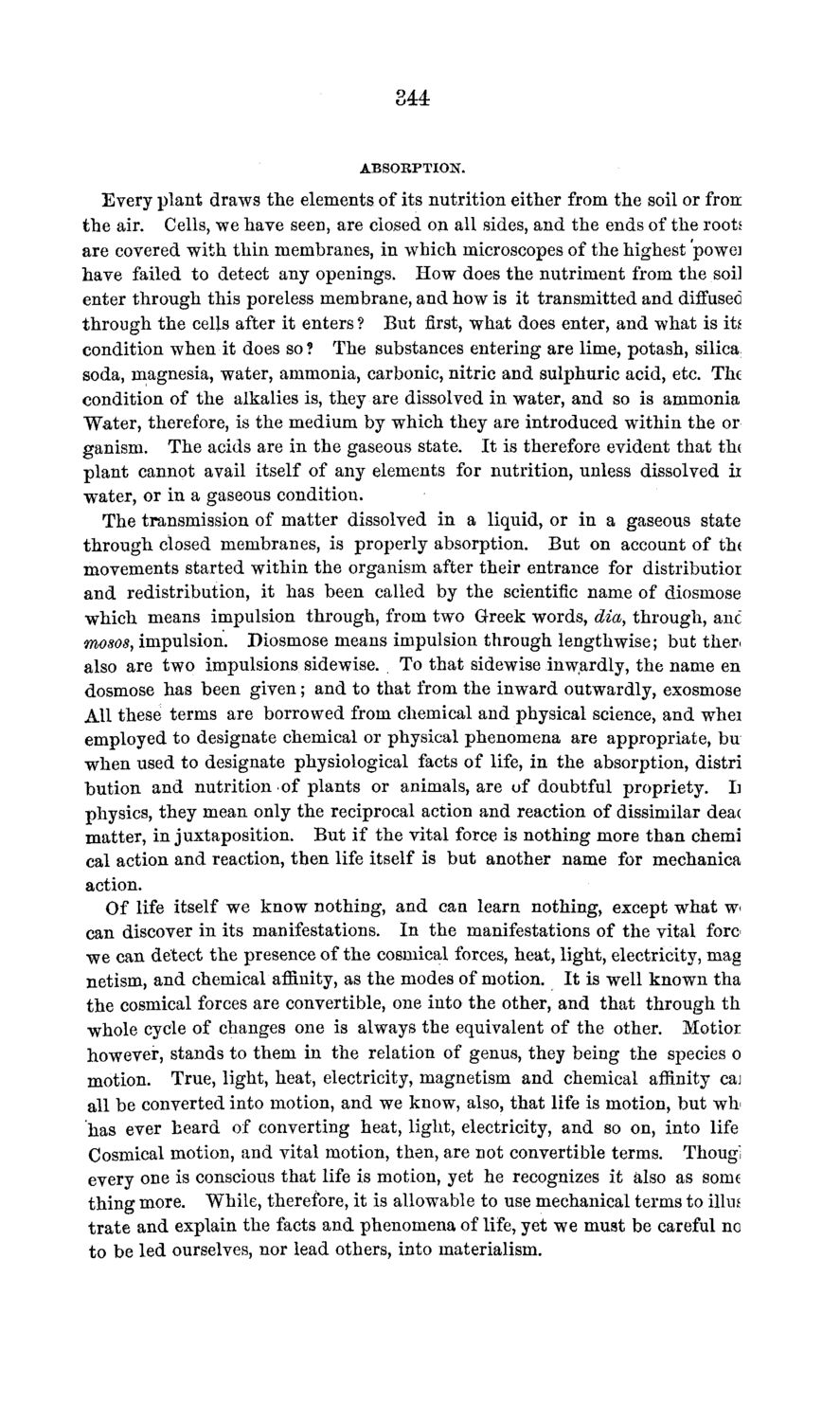| |
| |
Caption: Board of Trustees Minutes - 1869
This is a reduced-resolution page image for fast online browsing.

EXTRACTED TEXT FROM PAGE:
844 ABSOKPTION. Every plant draws the elements of its nutrition either from the soil or fron the air. Cells, we have seen, are closed on all sides, and the ends of the roots are covered with thin membranes, in which microscopes of the highest powei have failed to detect any openings. How does the nutriment from the soil enter through this poreless membrane, and how is it transmitted and diffused through the cells after it enters ? But first, what does enter, and what is its condition when it does so? The substances entering are lime, potash, silica, soda, magnesia, water, ammonia, carbonic, nitric and sulphuric acid, etc. The condition of the alkalies is, they are dissolved in water, and so is ammonia Water, therefore, is the medium by which they are introduced within the or ganism. The acids are in the gaseous state. It is therefore evident that th( plant cannot avail itself of any elements for nutrition, unless dissolved ii water, or in a gaseous condition. The transmission of matter dissolved in a liquid, or in a gaseous state through closed membranes, is properly absorption. But on account of th( movements started within the organism after their entrance for distributior and redistribution, it has been called by the scientific name of diosmose which means impulsion through, from two Greek words, dia, through, anc mosos, impulsion. Diosmose means impulsion through lengthwise; but ther also are two impulsions sidewise. To that sidewise inwardly, the name en dosmose has been given; and to that from the inward outwardly, exosmose All these terms are borrowed from chemical and physical science, and whei employed to designate chemical or physical phenomena are appropriate, bu when used to designate physiological facts of life, in the absorption, distri bution and nutrition of plants or animals, are uf doubtful propriety. L physics, they mean only the reciprocal action and reaction of dissimilar deac matter, in juxtaposition. But if the vital force is nothing more than chemi cal action and reaction, then life itself is but another name for mechanica action. Of life itself we know nothing, and can learn nothing, except what w can discover in its manifestations. In the manifestations of the vital fore we can detect the presence of the cosmical forces, heat, light, electricity, mag netism, and chemical affinity, as the modes of motion. It is well known tha the cosmical forces are convertible, one into the other, and that through th whole cycle of changes one is always the equivalent of the other. Motior however, stands to them in the relation of genus, they being the species o motion. True, light, heat, electricity, magnetism and chemical affinity caj all be converted into motion, and we know, also, that life is motion, but wh has ever heard of converting heat, light, electricity, and so on, into life Cosmical motion, and vital motion, then, are not convertible terms. Thougi every one is conscious that life is motion, yet he recognizes it also as some thing more. While, therefore, it is allowable to use mechanical terms to illus trate and explain the facts and phenomena of life, yet we must be careful no to be led ourselves, nor lead others, into materialism.
| |